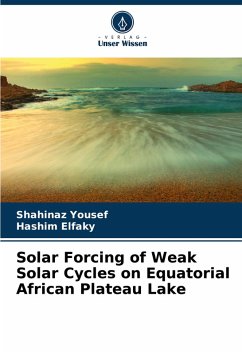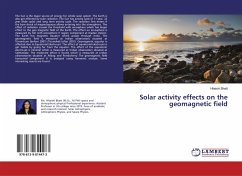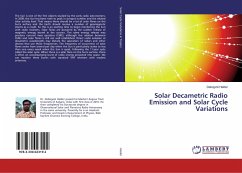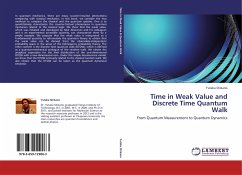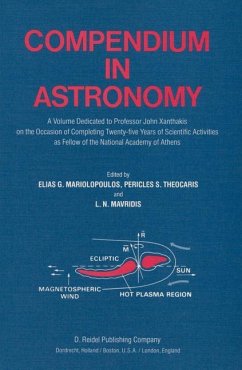
Solar Forcing of Weak Solar Cycles on Equatorial African Plateau Lake
Versandkostenfrei!
Versandfertig in 6-10 Tagen
25,99 €
inkl. MwSt.

PAYBACK Punkte
13 °P sammeln!
Weak solar cycles occupy the maximum and the bottom of the Wolf-Gleissberg cycles and induce climate changes that cause sudden rises of East African lakes. The 1962-64 sudden rise happened at cycles 19-20 interphase. Cycle 20 is weak. The 1878 -1922 period of weak solar cycle started with the 1878 sudden rise of lakes due to cycle 12. Cyclic rise and fall of lakes occurred due to forcing of solar cycles 13-15. The 1997 sudden rise is due to weak cycle 23. Altimetry satellites observations allowed us to extend our study to several East African Lakes and also to study the forcing of cycle 24. So...
Weak solar cycles occupy the maximum and the bottom of the Wolf-Gleissberg cycles and induce climate changes that cause sudden rises of East African lakes. The 1962-64 sudden rise happened at cycles 19-20 interphase. Cycle 20 is weak. The 1878 -1922 period of weak solar cycle started with the 1878 sudden rise of lakes due to cycle 12. Cyclic rise and fall of lakes occurred due to forcing of solar cycles 13-15. The 1997 sudden rise is due to weak cycle 23. Altimetry satellites observations allowed us to extend our study to several East African Lakes and also to study the forcing of cycle 24. Solar forcing is location and time dependent. The 1878 and 1997 sudden rises of lakes are attributed to very strong El Nino events followed by very strong La Ninas. The 1962 rise is attributed to negative North Atlantic Oscillations (NAO) index.



